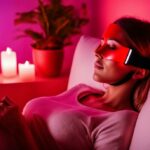Light therapy is a form of treatment that uses specific wavelengths of light to treat various conditions, such as seasonal affective disorder, acne, and sleep disorders. While it has been shown to have many benefits, there have been concerns about whether it is safe for long-term use. In this article, we will explore whether light therapy is bad for you and what the potential risks and benefits are.
Contents
Understanding Light Therapy
Light therapy is a non-invasive treatment that uses specific wavelengths of light to penetrate the skin and promote healing. It has been used to treat a variety of conditions, including seasonal affective disorder (SAD), acne, and psoriasis. The light used in therapy is typically blue, red, or a combination of both.
How Does Light Therapy Work?
Light therapy works by stimulating the body’s natural healing processes. The light penetrates the skin and stimulates the production of collagen and elastin, two proteins that are essential for healthy skin. It also increases blood flow and lymphatic drainage, which helps to remove toxins from the body.
Benefits of Light Therapy
There are many benefits to light therapy, including:
- Improved mood
- Reduced inflammation
- Increased collagen production
- Improved sleep
- Reduced pain
- Improved skin health
- Reduced acne
Light Therapy and Safety
While light therapy is generally considered safe, there are some potential risks to be aware of.
Eye Damage
One of the biggest risks of light therapy is eye damage. The light used in therapy is very bright and can damage the retina if not used properly. It is important to wear protective eyewear during treatment to avoid eye damage.
Skin Damage
Light therapy can also cause skin damage if not used properly. The light can cause burns or blisters if it is too strong or if the treatment is too long. It is important to follow the instructions carefully and to start with a shorter treatment time to avoid skin damage.
Cancer Risk
There is some concern that light therapy may increase the risk of skin cancer. While there is no definitive evidence to support this, it is important to be cautious and to limit exposure to UV light.
Interference with Medications
Light therapy can interfere with some medications, including certain antibiotics and medications used to treat anxiety and depression. It is important to talk to your doctor before starting light therapy to make sure it is safe to use with your medications.
Other Risks
Light therapy may not be safe for everyone. People with certain medical conditions, such as lupus or epilepsy, may be at increased risk of adverse reactions. In addition, pregnant women should avoid using light therapy, as it may harm the developing fetus.
FAQs – Is Light Therapy Bad for You?
What is light therapy?
Light therapy, also known as phototherapy, is a type of treatment that uses specific wavelengths of light to treat various health conditions. It is commonly used to treat skin disorders, seasonal affective disorder (SAD), sleep disorders, and depression. Light therapy devices emit fluorescent or LED light and are available in different forms, such as light boxes, lamps, and goggles.
Is light therapy safe?
Light therapy is generally considered safe and beneficial for most people. However, there are a few exceptions. People with certain medical conditions, such as epilepsy and lupus, should avoid light therapy as it may trigger their symptoms. Additionally, people who are taking medications that increase sensitivity to light, such as certain antibiotics and anti-inflammatory drugs, should consult with their doctor before using light therapy.
Does light therapy cause skin damage?
Light therapy is generally safe for the skin when used as directed. However, excessive and prolonged exposure to bright light may cause skin damage or irritations, such as sunburn, rash, and dryness. It is essential to follow the instructions provided with the light therapy device and avoid overusing it to prevent skin damage.
Can light therapy damage your eyes?
Prolonged exposure to bright light can have negative impacts on the eyes, such as eyestrain, dryness, and discomfort. However, most light therapy devices are designed to emit a safe and tolerable level of light that does not damage the eyes, even with prolonged use. For added safety, it is recommended to use goggles designed for light therapy to protect the eyes from excessive brightness or glare.
What are the side effects of light therapy?
Although light therapy is generally safe and well-tolerated, it may cause some mild side effects, such as headache, nausea, anxiety, and irritability. These side effects are usually temporary and subside once the treatment is stopped. Some people may also experience insomnia or sleep disturbances with light therapy, especially if used late in the day or close to bedtime.
Can light therapy have long-term effects?
Light therapy has been shown to be effective in treating various health conditions, but its long-term effects are still unclear. Some experts suggest that prolonged and frequent use of light therapy may lead to decreased sensitivity to the treatment, making it less effective over time. However, more research is needed to determine the long-term effects of light therapy on the body and mind.







